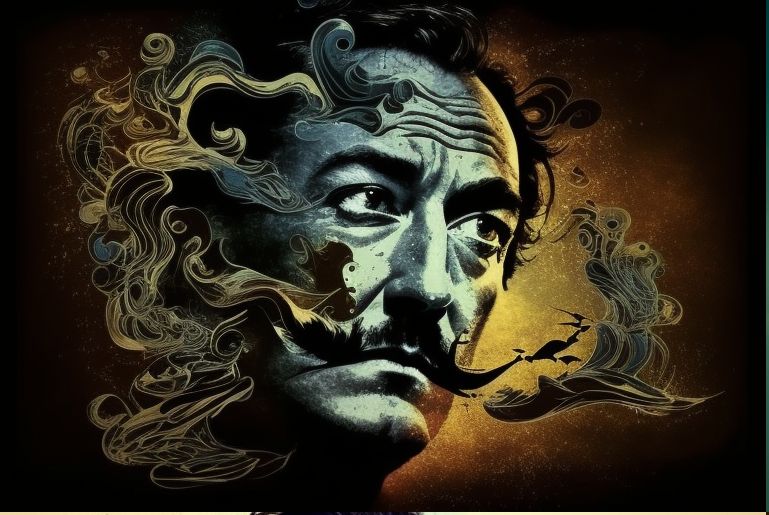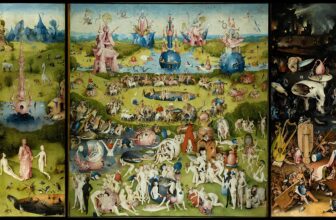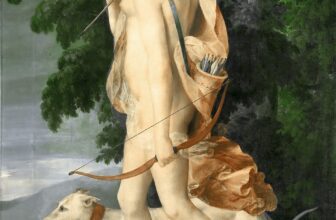
Who is Salvador Dali
Who is Salvador Dalí? The Life and Legacy of a Surrealist Icon
Salvador Dalí, one of the most celebrated and enigmatic artists of the 20th century, was a master of surrealism and a pioneer in pushing the boundaries of creativity. Born on May 11, 1904, in Figueres, a small town in Catalonia, Spain, Dalí’s eccentric personality and artistic genius made him a cultural icon whose influence continues to resonate in art, fashion, and pop culture. This blog explores the life, works, and enduring legacy of Salvador Dalí, an artist who made the impossible seem tangible.
Early Life: The Formation of a Genius
Salvador Domingo Felipe Jacinto Dalí i Domènech was born into a middle-class family. His father, Salvador Dalí Cusí, was a notary, and his mother, Felipa Domènech Ferré, encouraged young Salvador’s artistic endeavors. A pivotal event in Dalí’s early life was the death of his older brother, also named Salvador, who died nine months before Dalí’s birth. This loss profoundly affected Dalí, as his parents believed he was the reincarnation of his late brother, a belief that would fuel his fascination with identity and mortality.
Dalí showed artistic promise from a young age. He attended the Municipal Drawing School in Figueres and later the prestigious Royal Academy of Fine Arts of San Fernando in Madrid. During his academic years, Dalí experimented with Impressionism and Cubism, laying the foundation for his unique style.
The Rise of Surrealism
Dalí’s involvement in the Surrealist movement began in the late 1920s after he moved to Paris and met influential figures such as André Breton, the founder of Surrealism, and artists like Pablo Picasso and Joan Miró. Surrealism, a movement inspired by the unconscious mind and dreams, resonated deeply with Dalí. His iconic method, which he called the “paranoiac-critical method,” involved inducing hallucinatory states to unlock the creative potential of his subconscious.
One of Dalí’s most famous works, The Persistence of Memory (1931), epitomizes his surrealist vision. The painting features melting clocks draped over a barren landscape, symbolizing the fluidity and impermanence of time. This masterpiece cemented Dalí’s status as a leading figure in the art world.
Dalí’s Muse: Gala
A significant influence on Dalí’s life and art was his wife and muse, Gala (born Elena Ivanovna Diakonova). The couple met in 1929, and Gala became Dalí’s lifelong companion, inspiration, and manager. Their relationship was unconventional and sometimes controversial, but Gala’s impact on Dalí’s work was undeniable. She appeared in numerous paintings and served as a stabilizing force in his often chaotic life.
Beyond Painting: A Multifaceted Artist
While Dalí is best known for his paintings, his artistic pursuits extended far beyond the canvas. He collaborated with filmmakers such as Luis Buñuel on the surrealist films Un Chien Andalou (1929) and L’Age d’Or (1930), which shocked audiences with their provocative imagery. In 1945, he worked with Alfred Hitchcock on the dream sequence for the film Spellbound, showcasing his flair for visual storytelling.
Dalí also ventured into sculpture, photography, fashion, and design. He collaborated with fashion designer Elsa Schiaparelli to create the iconic “Lobster Dress” and designed the Chupa Chups logo, which remains in use today. His theatrical public appearances, such as delivering lectures in a diving suit, added to his mystique and made him a pop culture phenomenon.
Controversies and Exile
Dalí’s career was not without controversy. His eccentric behavior and political ambiguity led to his expulsion from the Surrealist group in 1934. André Breton nicknamed him “Avida Dollars” (“eager for dollars”), criticizing Dalí’s perceived commercialism. Despite this, Dalí’s fame only grew, and he embraced his role as a global celebrity.
During World War II, Dalí and Gala relocated to the United States, where they lived for eight years. This period marked a shift in Dalí’s focus toward religious and scientific themes. Works like The Sacrament of the Last Supper (1955) reflect his interest in nuclear physics and spirituality.
Legacy and Influence
Dalí’s later years were marked by declining health and the death of Gala in 1982, which deeply affected him. He passed away on January 23, 1989, in his hometown of Figueres. Today, his legacy endures through the Salvador Dalí Theatre-Museum in Figueres, a surrealist monument he designed himself.
Dalí’s influence extends beyond the art world. His work has inspired generations of artists, filmmakers, and designers. The surreal and dreamlike quality of his creations continues to captivate audiences, reminding us of the limitless potential of the human imagination.
Salvador Dalí was more than an artist; he was a cultural phenomenon who redefined the boundaries of creativity. From his groundbreaking surrealist paintings to his flamboyant persona, Dalí left an indelible mark on the world. His ability to transform the ordinary into the extraordinary challenges us to view life through a different lens, where the only limit is our imagination.
More About Salvador Dali
He is best known for his dream-like and visually stunning paintings that mix reality with fantasy and often feature elements of the subconscious mind.
Dali was a versatile artist who worked in various mediums, including painting, sculpture, photography, and film. He is particularly famous for his work in Surrealism, a cultural and artistic movement that emerged in the late 1920s and focused on exploring the irrational aspects of the subconscious mind.
One of Dali’s most famous works is the painting “The Persistence of Memory,” which features melting clocks in a dream-like landscape. This painting has become one of the most iconic images of Surrealism and is considered a masterful exploration of time and the subconscious mind.
In addition to his paintings, Dali was also a prolific sculptor and designed many unusual and eccentric pieces that often incorporated elements of his paintings. He was also a theatrical performer and created several short films, including “Un Chien Andalou,” which he co-wrote with filmmaker Luis Buñuel.
Dali was a controversial figure, known for his flamboyant personality and eccentric behavior. He embraced the notoriety and often used it to further his career and spread his ideas about Surrealism. Despite his quirks, Dali was a highly skilled artist who left a lasting impact on the art world.
Throughout his life, Dali was dedicated to his art and his ideas about the subconscious mind. He continued to produce new and innovative works until his death on January 23, 1989, at the age of 84.
In conclusion, Salvador Dali was a talented and innovative artist who left a lasting impact on the art world. His work continues to inspire and captivate audiences with its dream-like beauty and exploration of the irrational aspects of the human mind.




